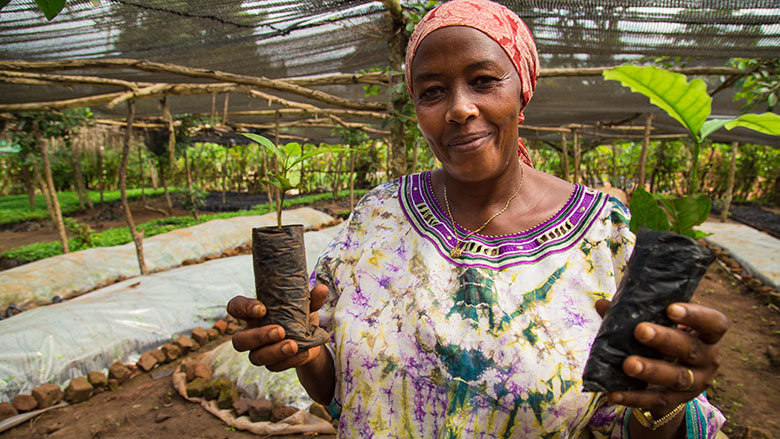By World Bank
Martha Wamatabu harvests about 600 kilograms of coffee beans in a good season. She has an acre of land in Bududa district where she has grown coffee for the last 10 years, one of few women in the area to do so.
“Not all women have land,” she said. “And even those who want to rent, find it difficult to get money.”
Based in Bududa district on the Mount Elgon ranges, Wamatabu and other coffee farmers also face other barriers. They lack access to markets, domestic and international. The cost of transport is too high due to the narrow murram roads that are often impassable during wet weather conditions.
These are among some of the challenges discussed in the World Bank’ new report, Closing the Potential-Performance Divide in Ugandan Agriculture. The report assesses the state of Uganda’s agriculture, and offers an unprecedented analysis of the structural context, highlighting challenges, trends and key opportunities for growth.
Agriculture is the backbone of Uganda’s economy, employing 69% of the population, and contributing half of Uganda’s export earnings and a quarter of the country’s gross domestic product (GDP). Since most Ugandans live in rural areas and practice farming, raising agriculture incomes – a centrepiece of Uganda’s National Development Plan – is critical to reducing poverty, boosting prosperity and creating jobs, especially for women and youth.
The report, which provides a historical review of the sector, notes that rising population and growth of incomes have increased the demand for food and agro-processed products. This is putting increased pressure on the environment amid frequent and severe climate conditions, made worse by the continued dependence on rainfed agriculture. Combined with poor agricultural practices, low technological adoption, insecurity over land ownership, poor access to extension services, low quality inputs, and lack of credit, the report notes that the agriculture sector continues to be hindered from realizing its full potential.
Challenges notwithstanding, Ugandan agriculture has enormous potential to transform the economy and make farming much more productive and profitable for Ugandan smallholder farmers, the report says. In stark opposition to supply-side constraints, demand-side opportunities for agriculture and food for Uganda and its neighbors are the strongest they have ever been, according to the report. Booming domestic and regional demand for higher-value foods arising from income growth, urbanization, and dietary shifts offer massive opportunities for Ugandan farmers, the report says, and for value chains beyond farm production, and better jobs in agriculture. Other areas of potential identified by the report are developments in agricultural technology and ICT, and various successful agribusiness models that could be upscaled.
Sam Agona, an ICT expert and farmer, prioritized the use of technology in his agribusiness when he decided to register his company in 2016. “We designed and developed tools to manage logistics, inventory, cash flow management and also staff management while in office and in the field,” he said. “It eliminated the need to communicate through time-consuming phone calls and kept comprehensive financial documentation for the enterprise. We capture our transactions on mobile.”
For Uganda to maximize its potential and take advantage of the opportunity to become a regional agri-food powerhouse, the report provides evidence on the strategic decisions and the needs to be addressed in Uganda, and success stories to draw on. The report identifies three priority areas for policy action and investment; (a) commercialization through value-addition and trade; (b) strengthened public institutions and policy, and (c) enhanced resilience of agriculture production and rural livelihoods.
Strengthening the institutional base of agriculture, removing identified distortions, facilitating trade, and enhancing resilience through climate-smart agriculture and low-cost irrigation systems can help closing the potential-performance divide of Ugandan agriculture. The report recommends that high priority actions be discussed in multi-stakeholder fora under national coordination.
“A productive and climate-smart agriculture sector requires an effective enabling environment. Providing that environment is the role of the Government,” said Holger Kray, head of the World Bank’s Africa Agriculture Policy Unit, and lead author of the report. “Uganda’s agriculture sector may not be transformed overnight. But making the right adjustments now will be critical to realize the Vision 2040.”
With access to more finance, more efficient farming and climate-smart practices, the report says Uganda will be able to reach its potential in agricultural returns.




